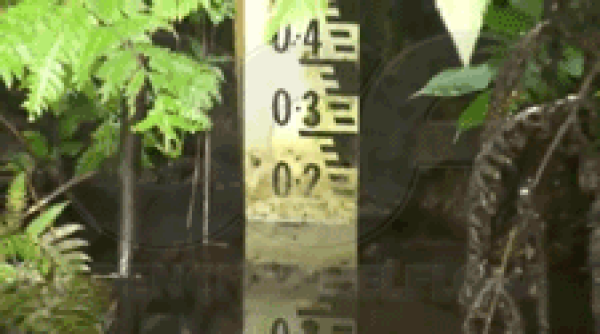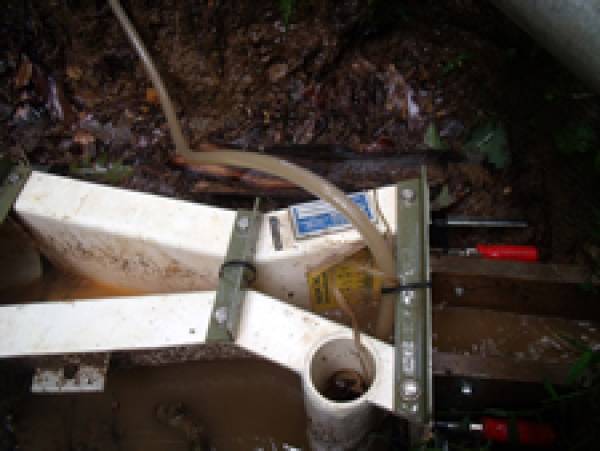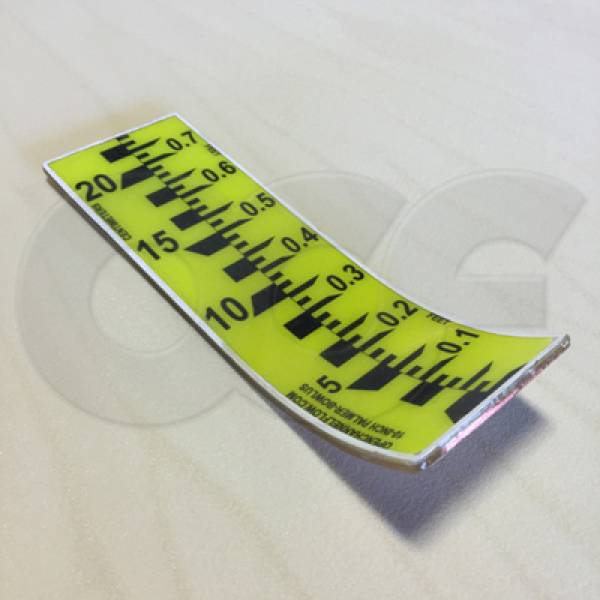This website uses a variety of cookies, which you consent to if you continue to use this site. You can read our Privacy Policy for
details about how these cookies are used, and to grant or withdraw your consent for certain types of cookies.
Reading a Staff Gauge
A Staff Gauge is a measuring tool, similar to a tape measure, used to provide a visual indication of the depth of water (typically in a river, flume, or weir). Staff gauges are inexpensive, static, permament, and don't require power and can be an excellent way to measure flow rates or water depths when the situation doesn't call for a full flow meter installation.
Standard Openchannelflow staff gauges are marked in centimeters on one side and feet / tenths / hundredths of a foot on the other. Custom gauges are also available, usually graduated in flow on one side and level on the other.
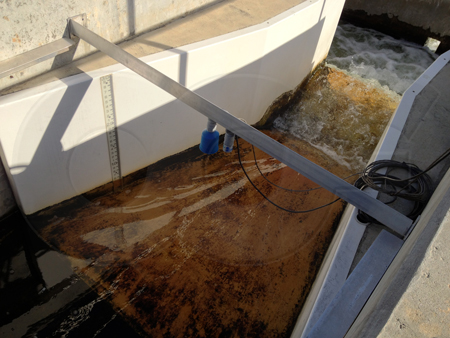
The level (or flow rate) on a staff gauge is indicated by graduated black bars. The bars vary in length based upon their proportion height to each major gradation (i.e. 1/10th of a foot) (not the total length of the gauge).
Unless the staff gauge is calibrated for a non-vertical installation, the spacing between gradations (and the height of the gradations themselves) is equally spaced.
Bar Spacing
For foot graduated staff gauges:
- The longest bar (with the downturned point) indicates a full 1/10th foot reading
- The mid-length bar (with the upturned point) indicates each full half of the 1/10th foot reading (or 1/20th of a foot)
- The shortest bars indicate each full 1/100th foot reading
- The white space between any bar is also 1/100th foot
Depending upon the size of the gauge, numerals may be included to denote each 1/10th or 1/5th foot (every other 1/10th foot spacing). Similarly, on metric incremented staff gauges, numerals are commonly used to denote every 10 centimeters.
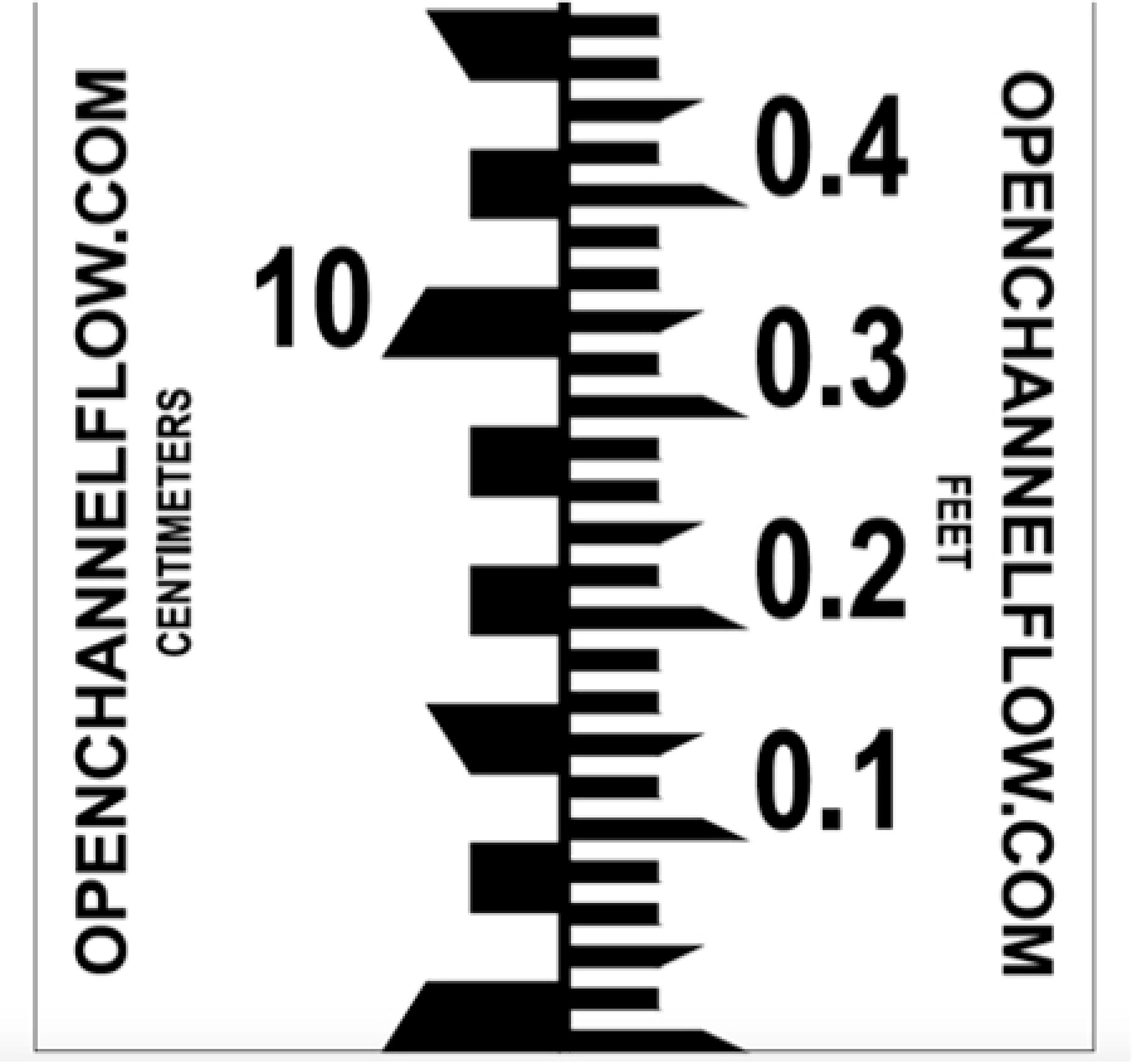
Non-Vertical Applications
While primarily used in vertical read applications (Parshall / Cutthroat / H flumes and weirs) where the water depth is the same as the vertical height on the staff gauge, staff gauges can be used in applications where the gauge is applied to a non-vertical surface.
In instances where the staff gauge is not mounted vertically, the gauge must either be graduated so as to indicate the vertical water depth or a calibration adjustment must be used. Typical non-vertical mount applications include Palmer Bowlus and Trapezoidal flumes.
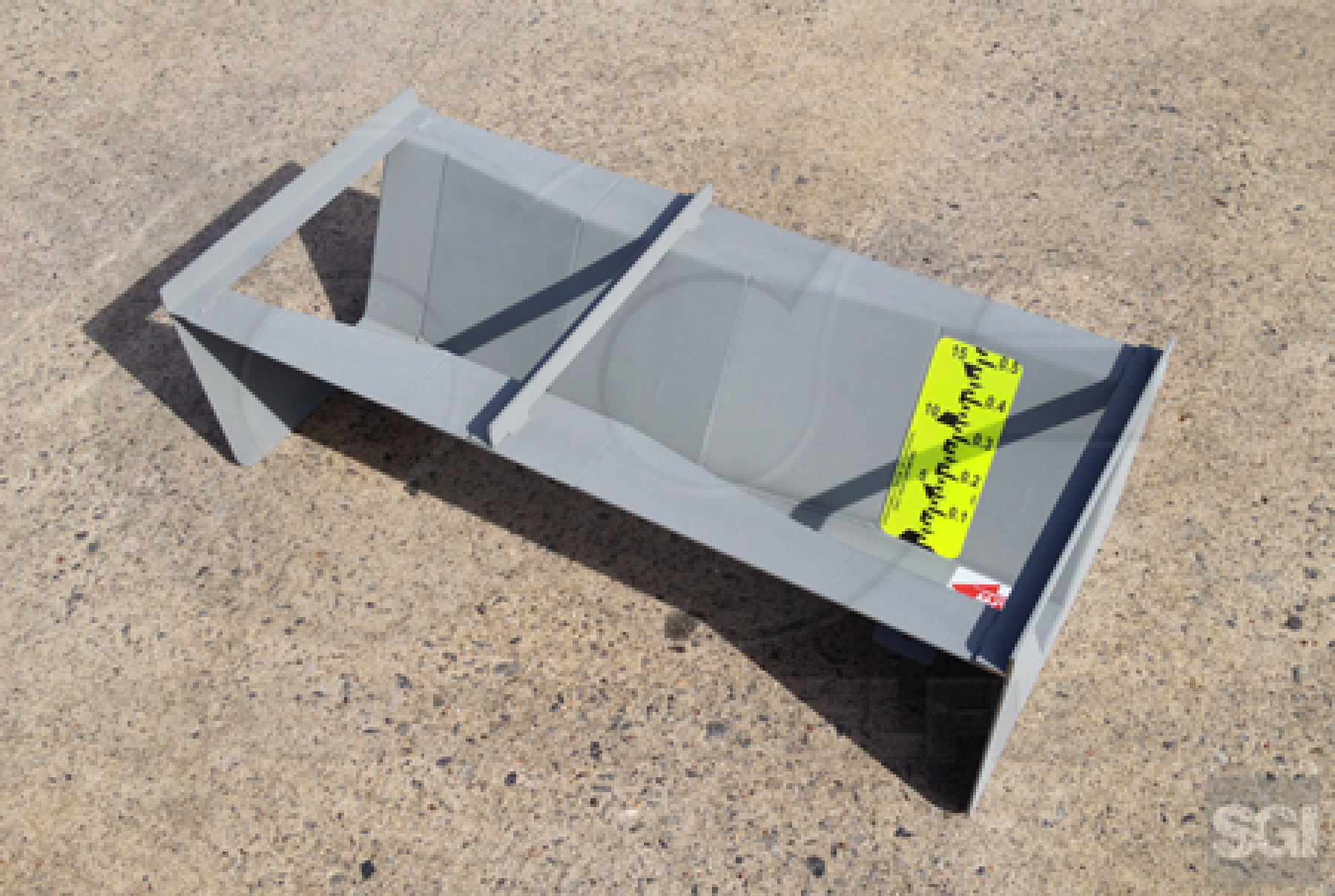
For Trapezoidal (and RBC) flume applications, a simple geometric constant can be provided to determine the vertical depth based upon the angled depth or the gauge can be calibrated.

Palmer Bowlus flumes are more difficult as the lower, curved wall of the flume means that a simple calibration adjustment can’t be made. For those applications, it is strongly suggested that a pre-calibrated staff gauge be used – one where the increments on the gauge itself have been varied so that they provide a direct reading of the vertical depth.
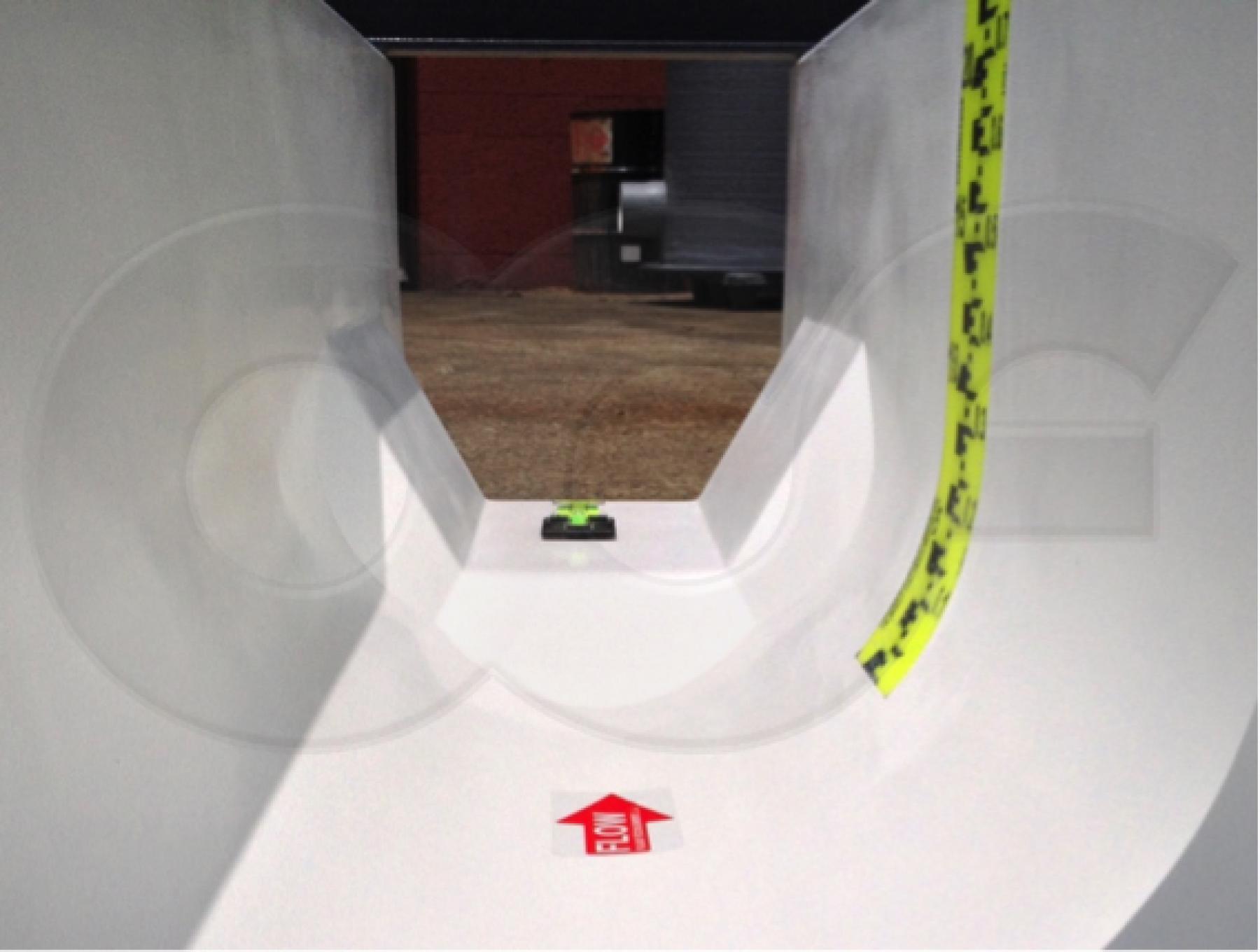
When using a staff gauge on a non-vertical surface it is important to know if the reading is corrected or uncorrected. For non-vertical applications, Openchannelflow indicates the primary device that the gauge has been designed (calibrated) for.
Examples
- Example 1: The arrow is pointing to the bottom of the long black bar with the downturned arrow. This indicates that the level is at the 3.2-foot mark.
- Example 2: The arrow is pointing to the top of the mid-length mark with the upturned arrow. This indicates that the level is at the half mark, in this case of the 3.1-foot area (as the numbers are indicating every 0.2-feet). Therefore, the level is 3.15-feet.
- Example 3: The arrows is at the top of the second short length bar above the mid-length bar with the upturned arrow. From Example #2 (above) we know that the mid-length bar indicates 0.05-feet. We also know that the space between each short bar (and the bar height itself) is 0.01’. There are two white spaces and two full black bars above the half mark, which means that there is 0.04’ above the half mark (of the 3.0-foot level).
The level, then, is: 3’ + 0.05’ + 0.04’ = 3.09’
Note that sometimes it is easier to simply count down from the full gradation mark above the water level. This is particularly true in Example #3, so another way to determine the level is simply to deduct the height of the one white space under the 3.1-foot mark, again making the depth 3.09-feet.
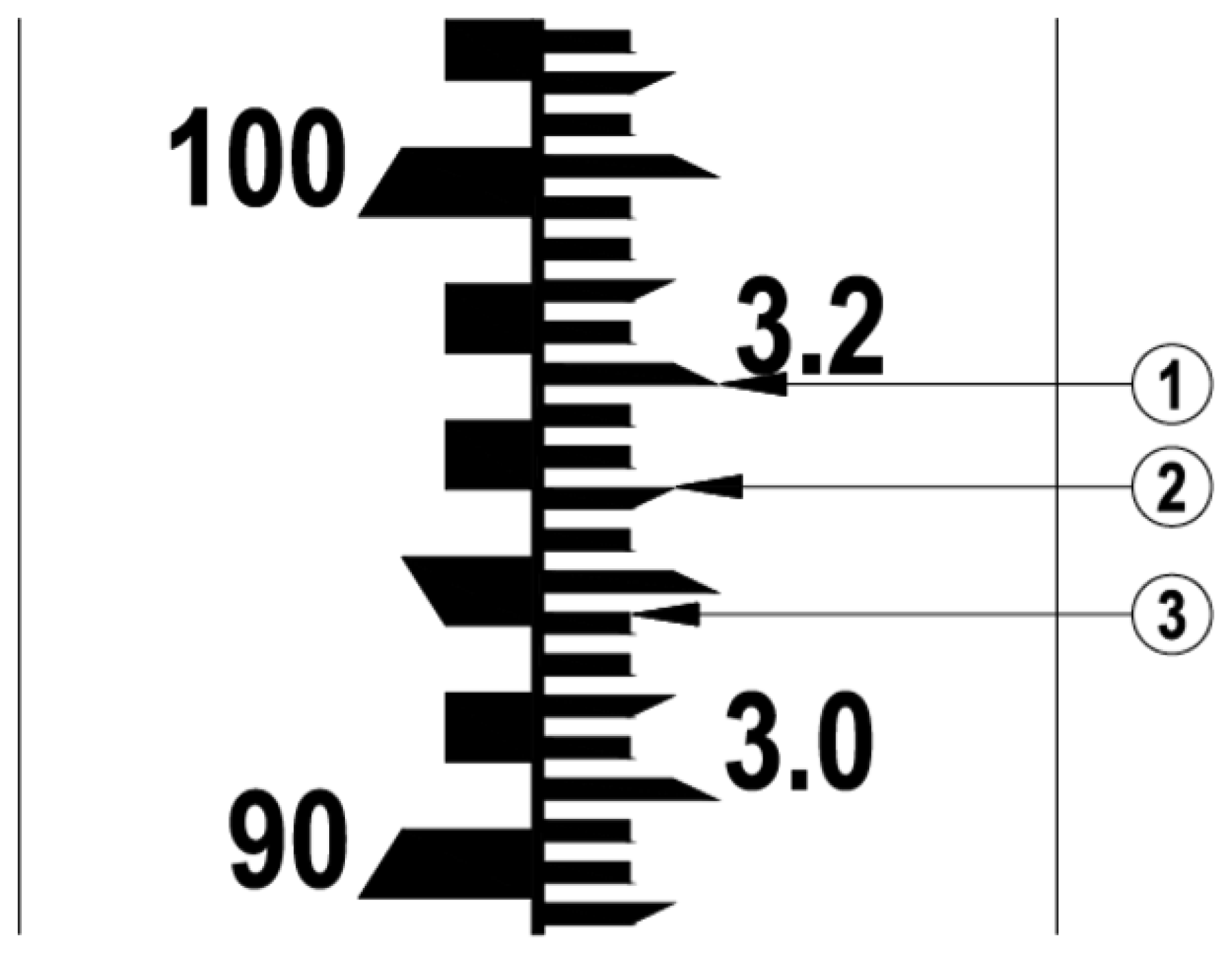
Related Blog Posts
Explore more insights in our blog.

LOCATIONS IN ATLANTA, GA & BOISE, ID


